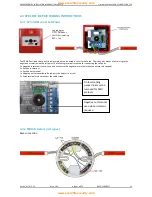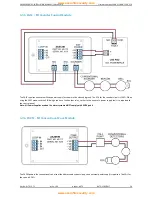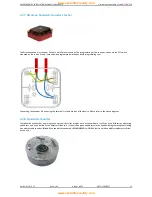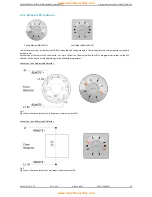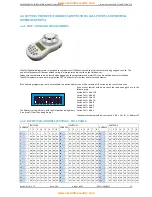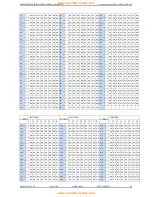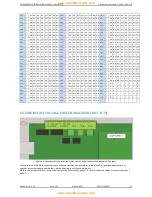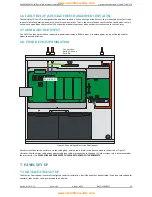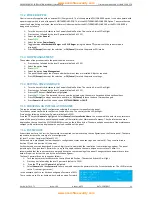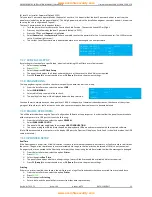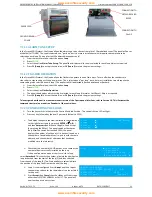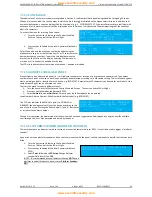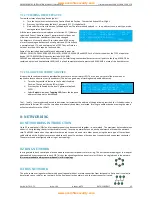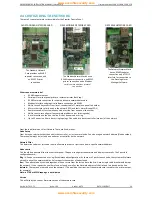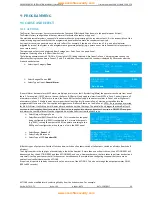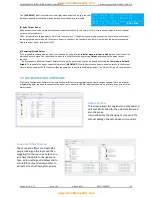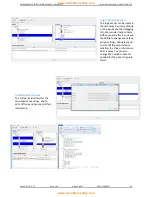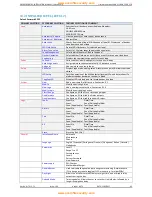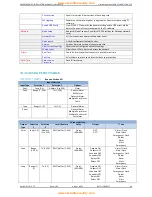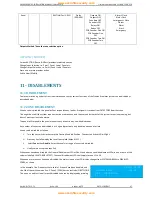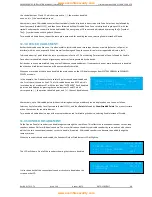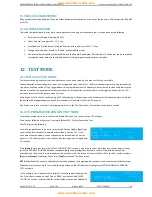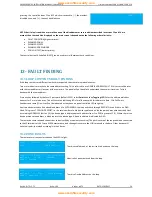
PREMIER QUATRO INSTALLATION MANUAL (Fyreye MKII) Firmware Versions: PANEL 1.84 & LOOP 3.70
Doc No: GLT-215-7-1 Issue: 1.36 Author: NJ/TE DATE: 25/05/2017
35
7.1.17 VIEWING DEVICE STATUS
To view the status of any loop device (point):
Turn the key switch clockwise to the Controls Enabled Position. The controls Active LED will light.
Press any key followed by the level 1 password (1111 is the default).
Next select Point from the menu, followed by Show. The information displayed is: - Loop, address, zone, point type, mode,
analogue value & text label.
NB the same parameters are displayed as in Section 11.7 (Address
Labels and Zones). However, Level 1 password control does not
allow the zone number and address label to be changed.
For detectors, V is usually about 72 for clean air and 160 during
alarm. Non analogue devices such as call points and I/O Units have
a normal value of 72, and an alarm value of 192. They will return a
value of less than 16 to report a fault condition.
LOOP :<1> ADR :[105] ZONE: 016
TYPE :OPT-STD MODE :ENABLE V:072
TEXT :RESTAURANT 2ND FLOOR
[ - ]
[ + ] [Exit ]
Some of the text labels displayed for each addressable point are:
ZAIO-MI, ZAI-MI, ZAZM-M, MKII-AOP, MKII-AOH, MKII-AHF, MKII-AHR and MCP. Each of these is known as the TYPE of a point or
device.
(NOTE: A SMM/B will have the text label MKII-AOP)
ZAZM-M is an abbreviation for Zone Monitor Unit, for interfacing conventional detectors or call points to the loop. MKII-AOP is a
combined optical and heat detector. MKII-AHF is a fixed temperature heat detector and MKII-AHR is a rate of rise heat detector.
7.1.18 LOCATE OR VERIFY A DEVICE
It is possible to send commands to individual devices to turn on their alarm LED. This can be a very useful function when it’s
required to locate a device or verify its address (This is also a good way of tracking down double addresses).
Turn the key switch clockwise to the Controls Enabled
Position. The controls Active LED will light.
Press any key followed by the level 2 password (default
2222).
Select
Points
followed by
Toggling LED
. Select the loop and
address of the point to be checked.
The [ - ] and [ + ] commands can be used to decrement or increment the address of the point being searched for. If the device has a
panel controlled alarm LED it will be turned on immediately its address is selected. Scrolling to another device or exiting the menu
will automatically turn the LED off.
8- NETWORKING
8.1 NETWORKING INTRODUCTION
Up to 32 control panels (CIEs) and /or repeater panels can be connected together, i.e. networked. The maximum distance between
nodes is 1 km (providing the correct data cable is used). To set up a network of panels, each panel must be fitted with a network
card. The RS485 terminals on the network card are used to connect one or two other panels, using the same type of fire resistant
cable with which the fire devices are connected to each panel. So each panel has one input connector and one output connector.
The network can be configured with a ring or bus topology.
8.2 RING NETWORK
In a ring network, each control panel is connected to other control panels to form a ring. This has the same topology as the loops of
addressable devices connected to each CIE. This has the advantage that no panels are lost if there is a single break in the network.
It is recommended to always network panels in this topology
.
8.3 BUS NETWORK
This is the same as a ring network but wired panel to panel without a return connection from last panel to first panel. It could also
be referred to as a radial or spur network. At the final panel in the network, only the input connector is used.
LOOP :<1> ADR :[002] ZONE: 001
TYPE :I/O STD MODE :ENABLE
TEXT :3RD FLOOR WEST HALLWAY
[ - ] [ + ] [Exit ]
www.acornfiresecurity.com
www.acornfiresecurity.com


